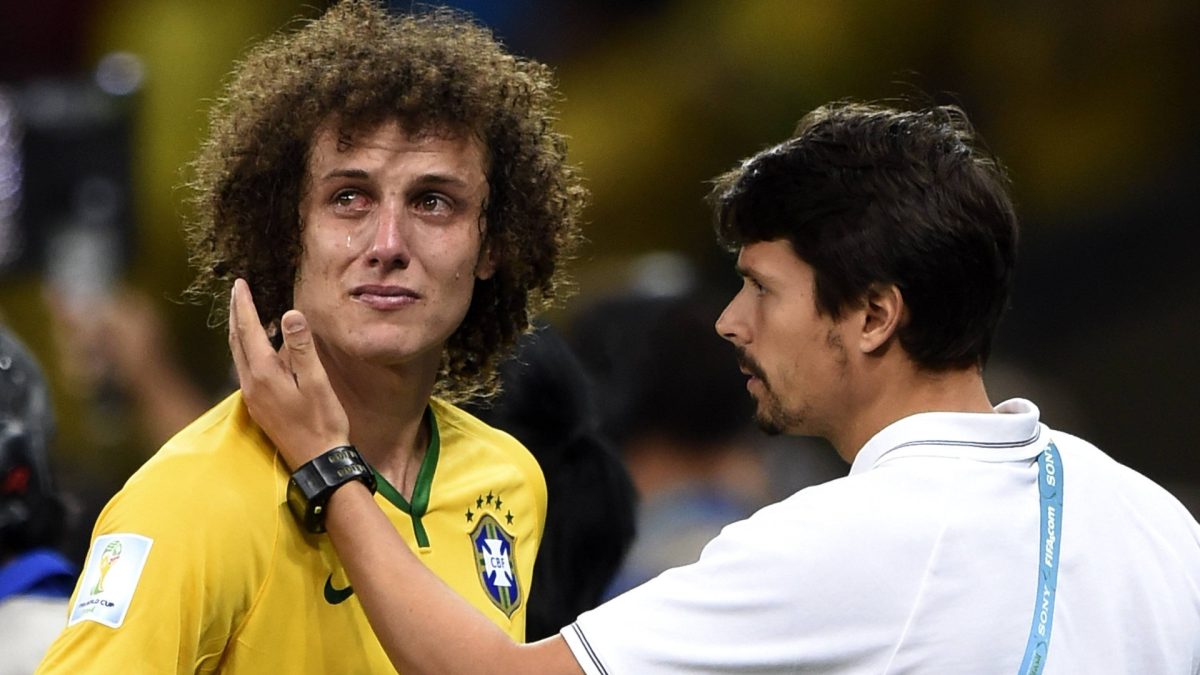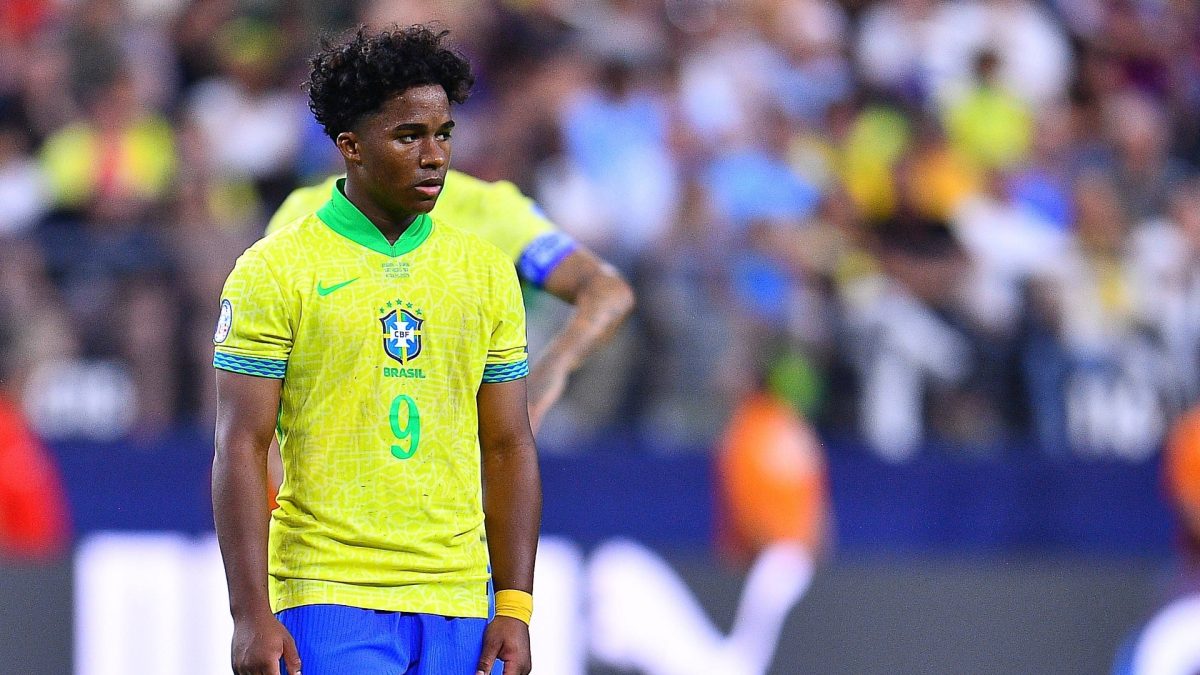Brazil’s shootout loss against Uruguay was two things — dull and morbid. Without star player Vinicius, out through yellow card suspension, and Neymar, who injured his knee in March, Brazil looked utterly lost as they battled to a stale 0-0 draw with Uruguay.
Without the two, Brazil looked predictable and stale. The team couldn’t use their teenage phenom Endrick, who was stranded between a physical backline and only completed two passes. The team’s double pivot in Joao Gomes and Bruno Guimaraes looked unconfident when passing the ball forward.
Lucas Paquetá looked like the only creative player on the field, the only one who looked upfield and generated chances. It made for a dull game of Brazil swinging the ball to the wing and crossing it into the box or simply taking long shots from 30 yards out. Brazil was tentative and dull.
And it seemed morbid to watch Uruguay, nearly 30 minutes removed from losing a defender through a red card, confidently stroll past Brazil in penalties. It felt like the risk-taking, samba-style Brazil squad we saw recently at the World Cup was dead. Brazil focused on controlling the ball and drawing chances through set-piece situations, not traditional squads’ winding dribbles and flair. Manuel Ugarte’s confident penalty not only put Uruguay through to the semifinals but shattered Brazil’s identity.
Loss evokes memories of Mineirazo
There will never be a more brutal loss for Brazil in recent memory than that Saturday in 2014. Brazil’s 7-1 loss against Germany is one of the most tragic, embarrassing losses in the history of soccer. It was their biggest defeat ever and a national embarrassment. They were fundamentally picked apart in the World Cup semi-finals in front of 58,000 rabid fans.
Although Brazil was missing captain Thiago Silva and star player Neymar, they started the match well with a period of back-and-forth play. However, they lost control after Thomas Muller scored within the first 20 minutes. Brazil failed to control the ball and fell apart under the pressure of their home crowd, conceding four goals within six minutes. Andre Schürlle would later score two second-half goals to make it 7-0.
Oscar finally got a goal for the Selecao after latching on to a long ball at the edge of the box, cutting past Jerome Boateng, and shooting past Manuel Neuer with one of the last kicks of the game. Only seconds after, the referee would blow his full-time whistle, and Brazil would collapse in tears. Brazil’s David Luiz sobbing and wiping his tears after the full-time whistle became emblematic of the match — a sad Brazil left to pick up the pieces of one of their worst moments in their 108-year career.

On the tenth anniversary of Mineirazo, you can only look back at a shattered legacy. Murky memories emerge when discussing the loss. To some, it’s a blur, with the match happening so fast they couldn’t comprehend it. To others, it was like slow-motion, watching Germany so efficiently and calculated murder Brazil seemed traumatic. But, the one objectively true thing is manager Luis Scolari didn’t set this team up to succeed.
The main cause of this catastrophe is the fact that Brazil, despite all of its technically gifted players, couldn’t keep the ball. Scolari started Fernandinho and Luis Gustavo in the double pivot, while opting to start attacking midfielder Oscar in his absence. Oscar was forced out of position by the strong German defense, leaving the duo to contend with Germany’s elite midfield by themselves. That, and a backline that made uncharacteristic mistakes, led to Germany both controlling possession and easily exploiting the holes in Brazil’s defense.
Brazil reaches a crossroads with Uruguay loss
We saw similar tactical errors as Brazil looked outclassed in all phases of the match.
With Vinicius’ suspension, manager Dorival switched starting striker Rodrygo to his preferred spot on the left. He then called up teenage star Endrick from the bench to start as a striker. Endrick, who can play as a secondary striker, an attacking midfielder, and more, played the role of a penalty-box poacher against Brazil, tasked with winning headers over Ronald Araujo and Cristian Romero.
He’s best dropping deep and linking play, but with the way Dorival used him, Brazil might as well have played with ten men.

Brazil’s backline, although untested under pressure, gave way in transition. They faced lapses of concentration, allowing the Uruguayan players to make especially piercing runs onto long balls. The best chance of the game, Nández’s first-half cross to Darwin Nunez, came partly because Eder Militao lost track of Nunez, who sneakily ran behind him to latch on to the cross.
But, the midfield is the biggest issue for Brazil. Paquetá was the only creative player on the pitch. The other two members of the midfield — Bruno Guimarāes and Joao Gomes — rarely completed any forward passes.
With a three-man midfield, you ordinarily have a creative player (think Paquetá), an anchor who primarily defends (Casemiro), and a box-to-box midfielder with stamina who can put in a reasonable amount of effort on both ends (Guimaraes). However, it seemed the double pivot of Guimaraes and Gomes sank back into their defensive ways. They rarely got up to join the attack, instead minimizing the risk of a counter-attack.
“The midfield is rubbish, do they even know how to play football? Paquetá knows, but he wants to fight,” World Cup-winning midfielder Gérson said. “João Gomes does not know how to play football & Bruno Guimarães only wants to foul. This is ugly. Everything must change.”
Brazil will set their eyes on World Cup qualifying, with a 23rd-straight berth on the horizon. However, they rest at sixth, just two points from a potential intra-confederation play-off. They will need positive results against Ecuador and Paraguay during the September international window.
